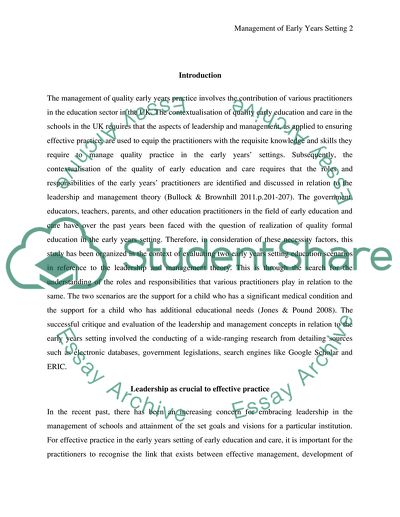Cite this document
(“MANAGING AN EARLY YEARS SETTING Assignment Example | Topics and Well Written Essays - 4000 words”, n.d.)
MANAGING AN EARLY YEARS SETTING Assignment Example | Topics and Well Written Essays - 4000 words. Retrieved from https://studentshare.org/education/1690108-managing-an-early-years-setting
MANAGING AN EARLY YEARS SETTING Assignment Example | Topics and Well Written Essays - 4000 words. Retrieved from https://studentshare.org/education/1690108-managing-an-early-years-setting
(MANAGING AN EARLY YEARS SETTING Assignment Example | Topics and Well Written Essays - 4000 Words)
MANAGING AN EARLY YEARS SETTING Assignment Example | Topics and Well Written Essays - 4000 Words. https://studentshare.org/education/1690108-managing-an-early-years-setting.
MANAGING AN EARLY YEARS SETTING Assignment Example | Topics and Well Written Essays - 4000 Words. https://studentshare.org/education/1690108-managing-an-early-years-setting.
“MANAGING AN EARLY YEARS SETTING Assignment Example | Topics and Well Written Essays - 4000 Words”, n.d. https://studentshare.org/education/1690108-managing-an-early-years-setting.


